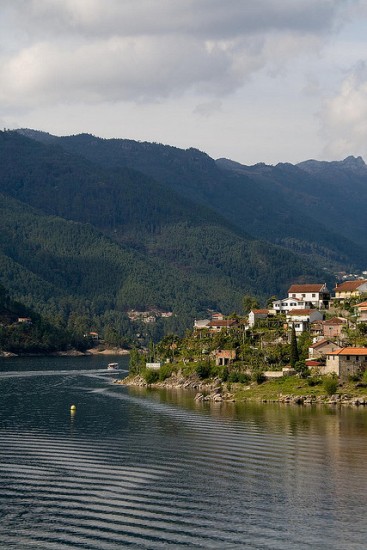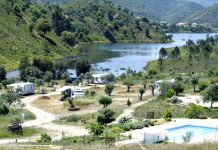Portugal is definitely one of the most scenic and beautiful countries on earth and what better way to explore it than visiting one of its most popular national parks such as Peneda Geres. This wonderful park was established back in 1971 and it offers about 270 square miles of fantastic countryside and diverse landscapes.
The park lies in the northern area of the country right along the border with Spain. When visiting the park you’ll come across an assortment of peat bogs, oak forests, pleasant green valleys, and granite heights that are believed to be about 300-million-years-old.
 (photo credit: silvaindemunck)
(photo credit: silvaindemunck)
The wildlife is quite unique here too as some of Europe’s least-common animals can be found wandering around the park. Don’t be surprised if you happen to spot foxes, deer, wolves, ibex, and wild boars. You may also see some smaller creatures such as otters, salamanders, and frogs.
There are close to 150 different species of birds in the park with many of them being migratory. In addition, there are 15 different types of bats that hang out here. Ten of them are very rare and are actually on the endangered species list.
However, the most famous inhabitants of this marvelous park are the wild Garrano ponies. These extraordinary creatures have been roaming around the area ever since the Celtic, in the first millennium B.C. They were nearly wiped out though during the mid-1900s due to extensive domestication. The Portuguese government started to protect the herds during the 1940s before the region was established as a national park.
While you’ll find a wide range of animals in Peneda Geres National Park, humans have also inhabited the area for many years. Evidence of human presence can be found in the megalithic stone tombs which are believed to be from as far back as the 3rd century.
The hilltops were used by the Celts as fortifications and there’s still a well-preserved road in the area which dates back to the Romans and was built during the 1st century. The road actually crosses through the park and used by many cyclists.
There’s some fine medieval architecture in the park’s borders as well. These include the Castro Laboreiro and Castelo do Lindoso castles which were erected in the 10th and 12th centuries respectively. The 9th century Santa Maria dos Pitões monastery is another popular and well-preserved historic site.
If exercise is on your mind, there are numerous ancient shepherd trails here that are excellent for hiking. Many people like to tackle a few of them and spend a few days camping in the park while trying out different hiking routes. The most scenic time for hiking is during April and May as the colorful flowers will be in full bloom. Another interesting hike is through the ancient Homem River Valley which will take you through some ancient forestland.
Since the park is in the north of Portugal, the Oporto airport is the closest and it’s about a two-hour drive from here. The splendid capital city of Lisbon is about 225 miles away. There’s a train station less than half a mile from the park’s headquarters. If you’re in Lisbon, you may want to drive to the park instead of flying to Oporto as this will allow you to travel through the stunning Portuguese countryside.
It sometimes snows in the park in the winter months, but it’s usually quite mild there. However, it rains quite a bit with the park’s highlands receiving the wet stuff on an average of 130 days each year. When you reach the park, be sure to take a ride on the back of one of the Garrano ponies. The domesticated ones can be hired out and it’s an excellent way to explore the tremendous open landscape.










